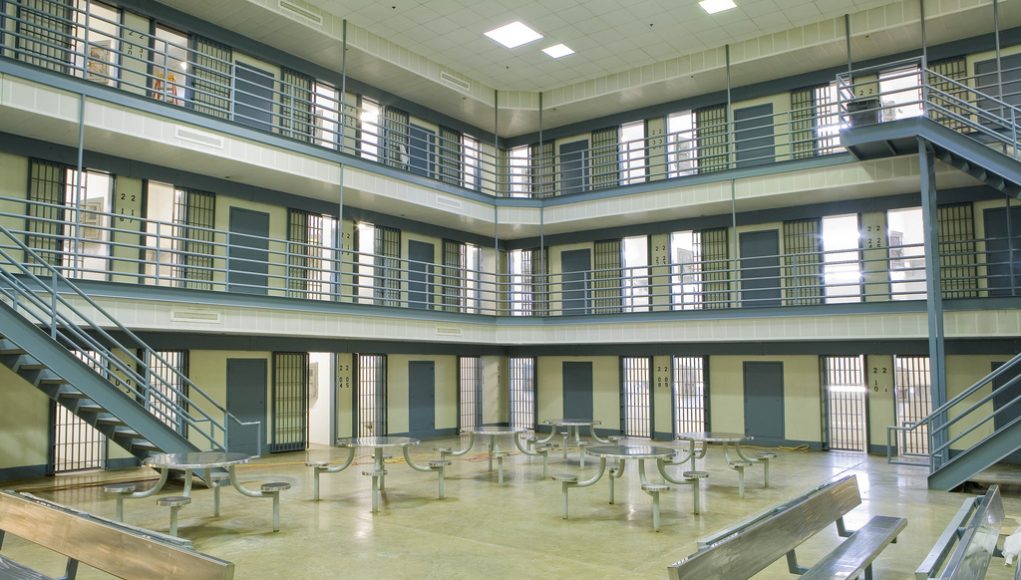Forward-thinking and conscientious Middleton High School student Lew Blank has spent a lot of time dedicating himself to research on racial disparities in Madison and throughout the state. His investigations have unearthed plenty of disappointing disparities, but what he most recently found made him sick to his stomach: Of the 56 Black neighborhoods in Wisconsin, 31(55%) are jails. Further, almost every single black neighborhood in the entire state of Wisconsin is either a jail or low-income housing.

Blank recently laid out his findings in a series of maps that reinforce the dismal state of African-American men in Wisconsin. The impetus for all of this research came to Blank at the beginning of the year, when he started checking out the racial dot map that places one dot per person on a map colored by race. Blank started to compare the images on the racial dot map to images on google maps and other online resources.
“As I researched, I began to find these isolated black neighborhoods in the middle of nowhere on these maps in almost every state,” Blank tells Madison365. “I started matching them to Google Maps imagery. I checked the addresses. I double-checked, triple-checked.”
Blank has had a passion for social and racial justice since he first started attending Young Gifted and Black (YGB) protests at the beginning of last year, specifically after the death of Tony Robinson. “That got me motivated to do research and to start looking at the racial dot maps, specifically,” he says.

His first venture was examining the shocking racial gaps in Madison, which Blank wrote about back in February, that explained the racial disparities in Madison through a geographic and economic lens. That first research led him to his second piece on black neighborhoods and jails.
“There was this piece of information in that original one about Green Bay … that was the first jail that I found and that shocked me,” Blank remembers. “I saw this one isolated black neighborhood in a field of white residences. That was the first one.”
That seemed weird to Blank and he soon found black neighborhoods in even smaller Wisconsin cities. There are ones in Boscobel, Chippewa Falls, Deerfield, New Lisbon, Oregon, Plymouth, and Waupun. He inspected further — all jails. Blank did some more research and found out that this was an epidemic everywhere. “Thirty-one of the 56 black neighborhoods in Wisconsin are, in fact, jails,” he says. “And I found out that the places that weren’t jails, weren’t great places to be – homeless shelters, section 8 housing, food deserts, etc.”
Of the black neighborhoods in Wisconsin that aren’t jails, Blank found that 21, or 38 percent, are apartment complexes, Section 8 housing, or both. Two are homeless shelters, and one is a job corps center. The only one left is Milwaukee’s general residential black neighborhood, which overall is doing very poorly.
I quizzed Blank on how he came to define “neighborhood” as I felt there were many black neighborhoods in Milwaukee west of I-43 and north of I-94. In Blank’s research, he counted the whole northwest area of Milwaukee as one big black neighborhood.

“The neighborhoods varied in size. The process was about finding an unbroken area. I did look at few definitions of a neighborhood,” Blank says. “There was also a disclaimer in there that the jails in Milwaukee were listed separately because, specifically, the metropolitan area of Milwaukee is 77 percent white. The fact that these jails were almost entirely black really highlights the racial disparities.
“Milwaukee is one of the most – if not the most – segregated cities in the world,” he adds. “It was an interesting city to look and see how the African-American and Latino populations are segregated so much.”
Overall, Blank says, he has gotten a lot of great feedback from his research.
“The input I have gotten so far from it has mostly been positive. I really checked and re-checked my sources to make sure that there were no errors,” Blank says. “I think this is information that everybody should know because there are a lot of people who still deny just the fact that there is a disparity in itself and that the incarceration disparity is pretty screwed up. A positive outcome of this all is that knowledge is power and facts are power. My main goal is to inform people and hopefully to inspire activism.”
It’s more than charts and maps, Blank adds his own conclusions to the research, saying:
Forty-one percent of inmates in Wisconsin’s jails are black, despite black people making up only 6 percent of Wisconsin’s general population. This is completely disproportional to the crime rate and drug usage rate, which has been statistically proven to be near-equal between blacks and whites.
Despite this terrible epidemic, it seems that whenever people try to speak out against it, they are met with backlash and apathy. Whenever people failed by a racially disparate economic system, a business-as-usual governmental system, and a rooted-in-slavery police system demand much-needed, life-or-death systemic changes by marching in the streets and chanting “Black Lives Matter,” they are somehow met with disdain for simply fighting for their freedom and their right to self-determination.
“That was basically just me expressing the feelings I had at the time I was writing this,” Blank says. “I was proofreading my article and I was so infuriated. I was screaming at my computer at one point. It’s so messed up. That really came from the heart. It came from the anger inside.
“It’s not like these are unsolvable problems,” he adds. “There are tangible solutions – community control over the police, re-investing in police funding into community initiatives … things like that. The real solution is the decriminalization of drugs and non-violent drug offenders. There are actually solutions to all of this.”




























